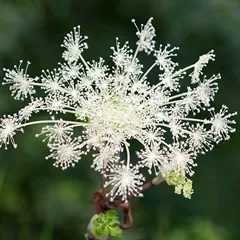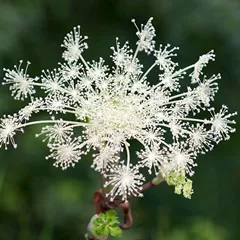Temporomandibular joint dysfunction according to Chinese Medicine
The information provided here is not a replacement for a doctor. You shouldn't use it for the purpose of self-diagnosing or self-medicating but rather so you can have a more informed discussion with a professional TCM practitioner.
In Chinese Medicine, temporomandibular joint dysfunction is sometimes associated with Painful Obstruction with Liver and Kidney Deficiency, a so-called "patterns of disharmony". Chinese Medicine sees the body as a system, not a sum of isolated parts. A "pattern" is when the system's harmony is disrupted. It is not equivalent to the Western concept of "disease" because both concepts arise from totally different ways of seeing the human body.
To understand whether someone's temporomandibular joint dysfunction might be caused by the pattern Painful Obstruction with Liver and Kidney Deficiency, one needs to look for signs and symptoms associated with the pattern beyond what one might typically experience from temporomandibular joint dysfunction alone. Indeed if temporomandibular joint dysfunction is caused by Painful Obstruction with Liver and Kidney Deficiency, patients also experience symptoms such as heavy and painful sensations in the lower back and lower extremities, weakness and stiffness, aversion to cold and attraction to warmth. Similarly, patients with Painful Obstruction with Liver and Kidney Deficiency typically exhibit fine (Xi), slow (Chi) or weak (Ruo) pulses as well as a pale tongue with thin white coating.
We've listed below a more detailed description of Painful Obstruction with Liver and Kidney Deficiency so that you can have a better understanding of where temporomandibular joint dysfunction might find its root according to Chinese Medicine.
Once identified, patterns are often treated using herbal formulas. Drinking herbal infusions is the most common remedy in Chinese Medicine, together with acupuncture. Here we detail below Du Huo Ji Sheng Tang, a formula that can help treat Painful Obstruction with Liver and Kidney Deficiency.
Painful Obstruction with Liver and Kidney Deficiency, a "pattern of disharmony" associated with temporomandibular joint dysfunction

The Kidneys is a so-called "Zang" Organ. Learn more about the Kidneys in Chinese Medicine
Painful Obstruction with Liver and Kidney Deficiency
Pulse type(s): Fine (Xi), Slow (Chi), Weak (Ruo)
Tongue coating: Thin white coating
Tongue color: Pale
Recommended herbal formula: Du Huo Ji Sheng Tang
Symptoms: Palpitations Aversion to cold Shortness of breath Attraction to warmth Weakness and stiffness Heavy and painful sensations in the lower back and lower extremities
Temporomandibular joint dysfunction might be due to Painful Obstruction with Liver and Kidney Deficiency if the condition is paired with typical pattern symptoms such as heavy and painful sensations in the lower back and lower extremities, weakness and stiffness, aversion to cold and attraction to warmth. Similarly, patients with Painful Obstruction with Liver and Kidney Deficiency typically exhibit fine (Xi), slow (Chi) or weak (Ruo) pulses as well as a pale tongue with thin white coating.
Read more about Painful Obstruction with Liver and Kidney Deficiency here
Du Huo Ji Sheng Tang, a herbal formula that might help with temporomandibular joint dysfunction



The top herbs in Du Huo Ji Sheng Tang are Pubescent Angelica Roots (Du Huo), Wild Ginger (Xi Xin) and Saposhnikovia Roots (Fang Feng)
Du Huo Ji Sheng Tang
Source date: 650 AD
Number of ingredients: 15 herbs
Key actions: Anti-rheumatic, clears Wind, Cold and Damp Stagnation. Strengthens the function of the Liver and Kidney. Tonifies Qi and Blood.
Why might Du Huo Ji Sheng Tang help with temporomandibular joint dysfunction?
Because it is a formula often recommended to help treat Painful Obstruction with Liver and Kidney Deficiency, a pattern sometimes associated with temporomandibular joint dysfunction. If it looks like you might suffer from Painful Obstruction with Liver and Kidney Deficiency, this formula might help (although please seek confirmation with a professional practitioner beforehand).
Symptoms related to temporomandibular joint dysfunction
Heavy and painful sensations in the lower back and lower extremities Weakness and stiffness Aversion to cold Attraction to warmth Palpitations Shortness of breath

